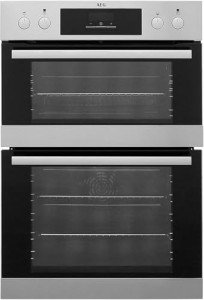14 Cartoons About Built In Electric Ovens That Will Brighten Your Day
Understanding Built-In Electric Ovens: A Comprehensive Guide
In the last few years, the kitchen has actually transformed from merely a cooking space to a center for household gatherings, entertaining visitors, and taking pleasure in quality time. One of the most pivotal components of contemporary cooking experiences is the kitchen oven. Built-in electric ovens have actually acquired tremendous appeal, thanks to their space-saving styles, sleek looks, and advanced functions. This short article provides an in-depth exploration of built-in electric ovens, covering their types, advantages, installation considerations, maintenance tips, and an extensive FAQ section.
What Are Built-In Electric Ovens?
Built-in electric ovens are integrated cooking units developed to be installed straight into kitchen cabinetry or walls. Unlike conventional freestanding ovens, built-in designs supply a smooth appearance, adding to the general design of the kitchen space. They come geared up with numerous cooking functions, advanced innovation, and energy-efficient functions.
Types of Built-In Electric Ovens
Built-in electric ovens come in numerous designs to meet varied cooking needs and kitchen styles. Here are the most common types:
Single Ovens: Ideal for smaller sized kitchen areas, single ovens use sufficient cooking area for everyday meals without using up excessive room.
Double Ovens: For avid cooks or families that enjoy hosting supper celebrations, double ovens supply the capability to cook multiple dishes at various temperatures at the same time.
Wall Ovens: Wall ovens are installed at eye level, making them easily available while removing the requirement to bend down. They generally can be found in single or double setups.
Combination Ovens: These versatile appliances combine standard oven cooking with microwave performance, enabling much faster cooking times while maintaining food taste and texture.
Steam Ovens: Designed for health-conscious cooks, steam ovens use steam to prepare food, maintaining wetness and nutrients. They are best for veggies, fish, and rice dishes.
Advantages of Built-In Electric Ovens
Built-in electric ovens use many benefits for house owners aiming to improve their cooking experience. A few of the advantages consist of:
Aesthetic Appeal: Their streamlined design permits greater design flexibility, fitting effortlessly into kitchen cabinets and creating a polished appearance.
Space Efficiency: Built-in ovens save important floor area, making them an excellent option for compact kitchen areas.
Improved Functionality: Many built-in electric ovens integrate the latest cooking innovations, such as convection cooking, wise controls, and several cooking modes.
Easy Accessibility: Models set up at eye level are easier to access, minimizing strain while checking or getting rid of food.
Increased Home Value: Installing a premium built-in electric oven can improve the resale worth of a home due to its contemporary and exceptional features.
Setup Considerations
While built-in electric ovens use numerous advantages, correct setup is crucial to guarantee they function optimally. Below are essential considerations to remember:
Cabinet Size: Ensure that the kitchen cabinetry where the oven will be installed is sized correctly. built under oven and hob packages built-in ovens featured particular dimensions that must be adhered to throughout setup.
Electrical Requirements: Built-in electric ovens require a dedicated electrical supply. Homeowners need to consult a licensed electrician to guarantee that the electrical wiring satisfies the essential specs.
Ventilation: Unlike gas ovens, electric ovens typically do not require venting, but sufficient air circulation is necessary to avoid overheating.
Positioning: Consider the oven's positioning concerning kitchen workflow. It ought to be quickly available while considering clearances from other kitchen appliances.
Setup Steps
- Step the cabinet space to make sure the oven fits.
- Ensure the electrical supply is ready.
- Carefully position the oven within its designated cabinet.
- Protect it according to maker instructions.
- Connect to power and test its functionality.
Maintenance Tips for Built-In Electric Ovens
To prolong the life of a built-in electric oven and guarantee its trustworthy efficiency, implement these upkeep pointers:
Regular Cleaning: Wipe spills and spots after each usage. Usage proper cleaners, ideally gentle, to avoid damaging the interior surfaces.
Inspect Seals: Inspect the door seals for cracks or damage, and replace them if necessary to maintain effectiveness.
Adjust Temperature: Over time, ovens might lose accuracy. Utilize an oven thermometer to verify temperature level readings and recalibrate if required.
Yearly Professional Service: Schedule an expert evaluation and upkeep service at least when a year for extensive checks and repairs.
Frequently Asked Questions (FAQs)
1. What size built-in electric oven do I need?
The size of the oven need to depend upon your kitchen layout and cooking requirements. Standard wall ovens generally range from 24 to 30 inches in width.
2. Can I set up a built-in electric oven myself?
While some homeowners might have the skills to install their oven, it is typically suggested to hire a professional to guarantee appropriate installation and compliance with safety requirements.
3. What features should I search for in a built-in electric oven?
Think about features like convection cooking, self-cleaning options, smart technology, and multiple cooking modes to improve your cooking experience.
4. Just how much does a built-in electric oven expense?
Rates range substantially based on brand, functions, and size. A standard model might begin around ₤ 500, while high-end options can go beyond ₤ 3,000.
5. Are built-in electric ovens energy-efficient?
Most modern-day electric ovens come equipped with energy-efficient innovations, assisting to lower energy usage while keeping cooking efficiency.
Built-in electric ovens provide a blend of style, convenience, and advanced cooking capabilities, making them an essential addition to today's cooking areas. By understanding the types, benefits, installation factors to consider, and correct upkeep, house owners can make informed decisions that optimize their culinary experiences while enhancing their kitchen's aesthetic appeals. Whether one is a skilled chef or a casual cook, purchasing a built-in electric oven can change the cooking experience into a wonderful culinary journey.
